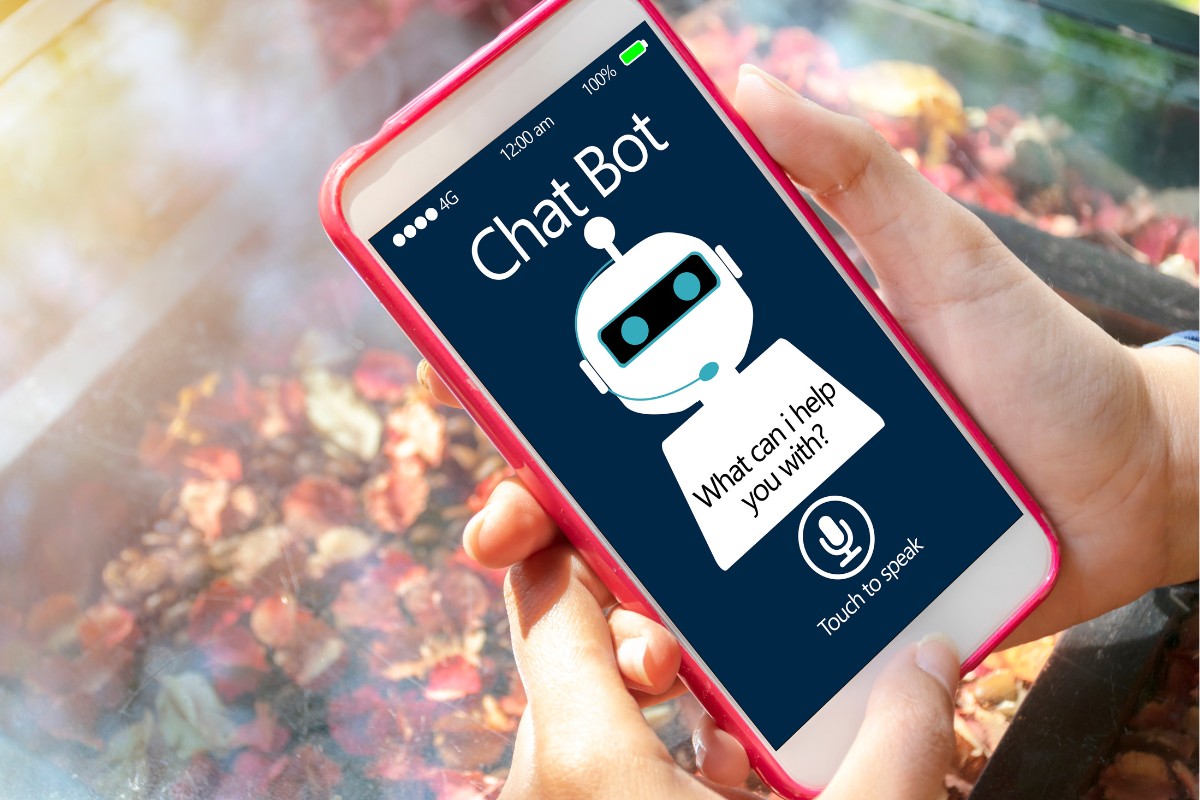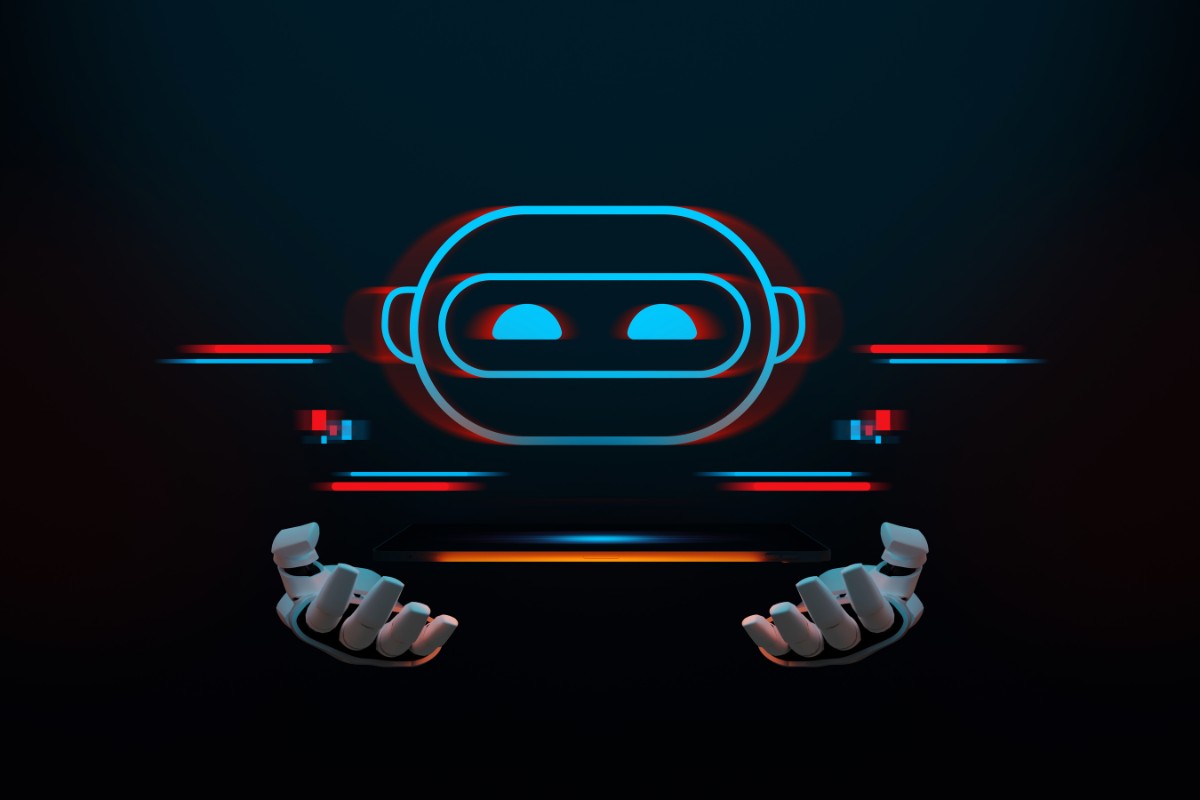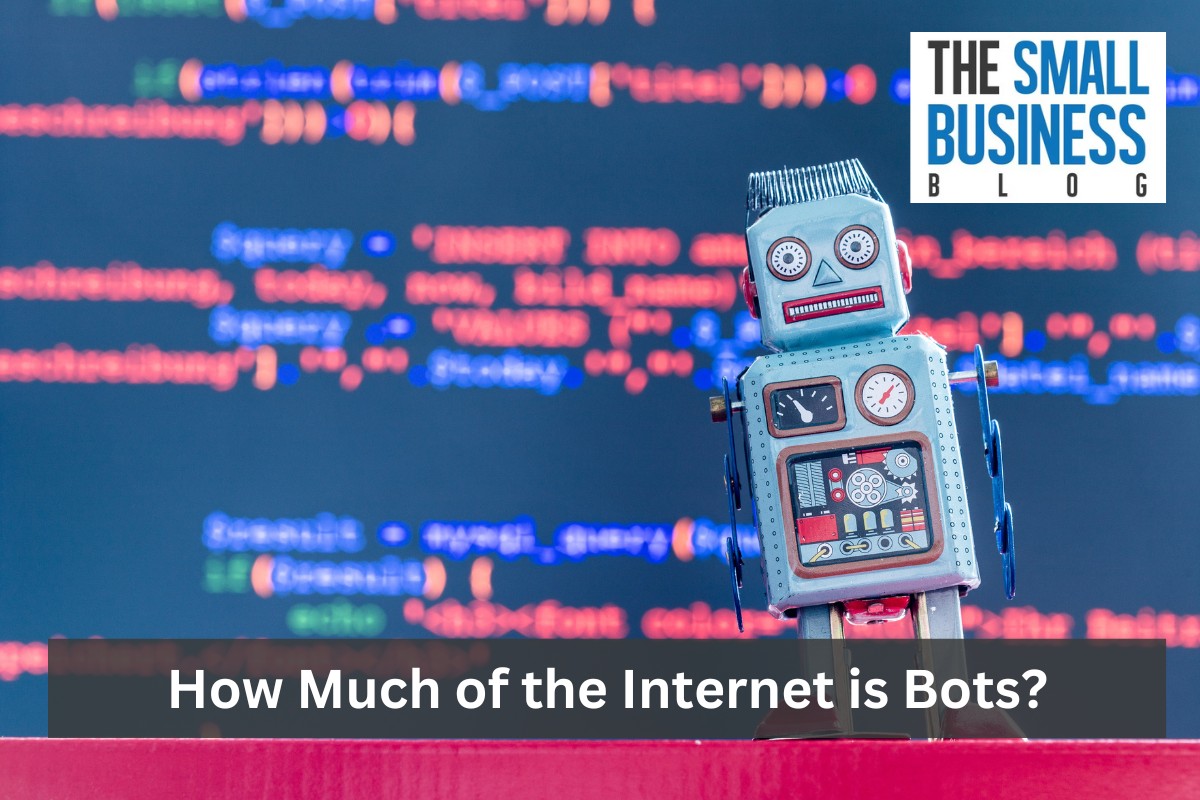We want to preface this article by informing you that not all internet bots are bad.
In fact, there are some good bots and some bad bots.
That said, how much of the internet is bots?
Let’s discuss this topic in more detail.
On of the things we will discuss in this article is how bots have been swiftly evolving since 2013 in the wake of generative AI (artificial intelligence).
Karl Triebes, Imperva’s senior VP, says this technology will continue to rapidly evolve at what he calls a “concerning rate over the next 10 years.”
What else can we find out about internet bots?
We’ll dig into our research and share what we discovered here today.
Post Contents
- 1 How Much of the Internet is Bots?
- 1.1 1. What are Bots?
- 1.2 2. What are Good Bots?
- 1.3 3. What are Bad Bots?
- 1.4 4. How Do Bad Bots Impact Businesses?
- 1.5 5. How Have Bad Bots Impacted Industries?
- 1.6 6. What is the Percentage of Mobile Bad Bot Operators?
- 1.7 7. How Much of the Internet Across the World is Bad Bots?
- 1.8 8. How Have Bad Bots Impacted API Account Takeovers?
- 1.9 9. The Good Bot Vs Bad Bot Vs Human Web Traffic by Industry
- 2 Conclusion
Key Statistics
- 2022 showed that 47.4% of web traffic was bots
- In 2022, 17.3% of internet traffic came from good bots.
- 52.6% of web traffic in 2022 came from human traffic.
- 30.2% of all internet traffic in 2022 came from bad bots.
- 23.6% of all web traffic accounted for bad bots in 2013.
- Between 2021 and 2022, the internet saw an increase of 2.5% in bad bot actors.
- 2019 saw an increase in human web traffic at a 10-year high of 62.8%.
- 2022 saw 47.4% of bot web traffic, which is categorized as “automated traffic”.
- 17% of API-targeted attacks were from bad bots known to abuse business logic.
- The U.S. has the highest share of bad bot web traffic at 41.8%.
- Australia saw a rise of 9.45% between 2021 and 2022 in bad bot traffic.
- The U.K. has only a 6.7% share in bad bot traffic.
How Much of the Internet is Bots?

The Imperva Bad Bot Report is in its 10th year of publishing and reporting this data.
It shows that over the past 10 years, bad bots and bot internet traffic in general has seen a large uptake in usage.
By the end of 2022, bad bots accounted for 30.2% of all web traffic.
Good bot traffic accounted for 17.3%. In terms of solely human web traffic, 52.6% came from human interactions.
Looking back, we see that 57% of all web traffic was from humans, which means 43% is from bots.
19.4% is from good bots, and 23.6% came from bad bot actors.
Furthermore, Imperva reported that in 2014 there was a significant rise in good bot web traffic that went from 20.98% to 36.32%.
This rise was due in part by Bing’s increase in aggressive indexing.
In 2015, we saw the lowest amounts of bad bot web traffic between 2013 and 2023 at 18.6% and human web traffic increased to 54.4% from 40.9% in 2014.
We saw a significant rise in human web traffic in 2019 when it was at 62.8%, which decreased to 59.2% by the end of 2020.
Moreover, the lowest percentages of good bot web traffic occurred in 2019 at 13.1%, 14.6% in 2021, and 15.2% in 2020.
Overall, there have been some fluctuations in good bot, bad bot, and human internet traffic over the past decade.
From this Imperva data we can see how much bad bots have grown in just a decade.
In just one year, bad bots grew by 2.5% between 2021 and 2022.
(Imperva, Statista)
1. What are Bots?
Now that we have some bot statistics, let’s discuss what bots are.
Imperva describes a bot as a “software application that runs automated tasks.”
The tasks that bots can run range from simple form filling to sophisticated data scraping from websites.
The Imperva report tells use that there are even good bots that can be concerning, especially in terms of advertising.
Overall, 2022 saw 47.4% of bot web traffic (good and bad), which is categorized as “automated traffic”.
This figure represents a 5.1% increase over 2021 where 42.3% of all web traffic was automated traffic from bots, both good and bad.
2. What are Good Bots?
Let’s talk about good bots.
The basic definition of a good bot is a software application created to conduct beneficial and functional tasks on the internet.
Most good bots are created by search engines and organizations to improve web indexing, website optimization, and content curation.
Examples of good internet traffic bots include crawlers used by search engines, aggregator bots like those used for Feedly, site monitoring bots like they use on Pingdom, and bots that check backlinks like those used by SEMRushBot.
Like human and bad bot web traffic, good bot traffic has also seen fluctuations over the past decade.
One of the larger fluctuations was the rise in good bots from 14.6% in 2021 to 17.3% in 2022.
Sometimes good bots are a cause for concern because they can skew website analytics reports that make some web pages look more popular than they are.
One example of this is if you place advertisements on your website, a good bot may generate an impression, but the click doesn’t convert into the sales funnel.
3. What are Bad Bots?
Bad bots are also software applications that are used for automated tasks, but they have malicious intent behind them.
Bad bots are known to scrape website data without the owner’s permission.
That data is then reused to get an edge over competitors.
This includes reselling at higher prices, scalping, and proprietary content.
Examples of how bad bots can also be used include DDoS where they are used to deny services to a network application (business), credential stuffing, and other cyberthreats and attacks.
Bad bots also come with three levels of classifications by sophistication, which include:
- Simple bad bots that come from a single ISP that connects to sites via automated scripts.
- Moderate bad bots that are more complex use headless browser software that can mimic browsers which can include be able to run JavaScript.
- Advanced bad bots are the most sophisticated of them all. These bad bots can mimic human behavior such as mouse clicks that are designed to spoof bot detection. The malware is installed into real browsers that connect to websites.
Furthermore, evasive bad bots run the thin line between moderate and advanced bad bots.
Imperva revealed that 30.2% of all web traffic comes from bad bots as of 2022.
Going further on this topic, we can look at how this plays across the classifications of bad bots.
As of 2022, 15.4% of all bad bot internet traffic comes from moderate bad bots.
Moreover, 33.4% comes from simple bad bots.
Advanced bad bot traffic accounts for 51.2% of all bad bot web traffic.
The most shocking and startling statistics regarding evasive bad bots is that this accounts for 66.6% of all bad bots internet traffic.
4. How Do Bad Bots Impact Businesses?
It’s important to note that APIs (application programming interface) are the most vulnerable to bad bots of all classifications.
APIs are widely used by organizations all over the globe.
The statistics show that 17% of API-targeted attacks were from bad bots known to abuse business logic.
Likewise, 21% accounted for other forms of automated threats.
What’s a business logic attack?
This is when an attack targets any flaws in the design or implementation of a software application on a network, mostly business related.
These attackers are known to exploit these flaws for a plethora of malicious reasons, including data theft, illicit access to user accounts, etc.
5. How Have Bad Bots Impacted Industries?
Let’s take the data from Imperva’s 2023 Bad Bot Report (2022 data) and look at how bad bots affected various industries in 2022.
Bad Bot Traffic
- Gaming had a share of 58.7% of bad bot traffic in 2022.
- 47.7% of the Telecom and ISPs industries saw bad bot traffic.
- A 41.1% share of bad bot web traffic affected the Community and Society industry.
- The Computing and IT industry had a share of 40% of bad bot web traffic in 2022.
- 38% of Business Services experienced bad bot traffic.
Advanced Bad Bot Traffic
- 89% of the Law & Government industry experienced advanced bad bot traffic in 2022.
- 63.4% of the Travel industy was impacted by advanced bad bot traffic.
- The ISP and Telecom industries saw a share of 60.5% of advanced bad bot traffic.
- 51.9% of the Retail industry was impacted by advanced bad bot traffic.
- The Financial Services sector had a share of 45.8% of advanced bad bot traffic in 2022.
6. What is the Percentage of Mobile Bad Bot Operators?

As you might expect, the growth in mobile usage has also encouraged bad bot operators to target mobile browsers.
This area of bad bots is still on the rise.
We have some statistics from the Imperva report for you here.
The highest instances of bad bots reported as mobile for Mobile Safari, Mobile Chrome, and other mobile browsers is currently at 39.1%.
Likewise, in terms of mobile ISPs, there is a 26.9% share of attacks in this realm.
AWS has also seen a sizeable increase of 9.45% between 2021 and 2022 in bad bot operators.
In 2021, 7.95% of bad bot operators affected the Amazon ISP compared to 2022 where that figure is 17.4%.
7. How Much of the Internet Across the World is Bad Bots?
We know the overall percentage of bad bots is over 30% of all internet traffic, but how does this translate into countries and regions?
- The United States is at the top of the list with a 41.8% share even though this is a decrease compared to 2021 when these attacks accounted for 43.1%.
- In contrast, Australia‘s bad bot share is 16.4% in 2022, which is a huge rise from the 6.8% in 2021.
- Next, the United Kingdom has a share of 6.7% of bad bots, France has a share of 3.6%, and Germany’s share of bad bots is 2.8%.
8. How Have Bad Bots Impacted API Account Takeovers?
Let’s address how bad bots have affected account takeovers when they are targeting APIs.
- Reports show that 35% of API targeted attacks are specifically account takeover attacks.
- Account takeover (ATO) attacks grew 155% between 2021 and 2022.
- The Sports industry accounts for 37.7% (the highest) of all ATOs (logins).
- 30.4% of all logins related to ATOs occurred in the Automotive industry.
- The Travel industry saw 24.2% of all logins for ATOs.
- Computing and Healthcare each accounted for a 20.4% share of all login ATOs.
- Financial Services have a share of 37.8% in ATO attacks.
The countries with the most ATO attacks include:
- The United States
- Netherlands
- Brazil
- Mexico
- Puerto Rico
- Italy
9. The Good Bot Vs Bad Bot Vs Human Web Traffic by Industry
Finally, we want to cover the good bot versus the bad bot versus human web traffic by industry.
Here are the top 10 results.
- Gaming: 58.7 bad bot; 4.6% goof bot; 36.6% human
- Telecom & ISPs: 47.7% bad bot; 8.8% good bot; 43.6% human
- Community & Society: 41.4% bad bot; 8.5% good bot; 50.1% human
- IT & Computing: 40% bad bot; 12.8% good bot; 47.3% human
- Business Services: 38% bad bot; 7.7% good bot; 54.3% human
- Travel: 37.4% bad bot; 4.3% good bot; 58.3% human
- Food & Groceries: 32.2% bad bot; 25.1% good bot; 42.8% human
- Sports: 31.8% bad bot; 4.1% good bot; 64.1% human
- Healthcare: 31.7% bad bot; 9.8% good bot; 58.5% human
- Entertainment: 29.8% bad bot; 53.6% good bot; 16.6% human
The lowest five industries in bad bot traffic included the Law and Government (22%), Education (20.4%), News (19.5%), Lifestyle (18.3%), and Automotive (16.5%).
Conclusion
We now know that while there is some debate about just how much of today’s web traffic is bots, it’s closing in on being half or more nowadays compared to conventional human traffic.
Human internet traffic is still higher (mostly) on average, but we need to be aware that bot traffic (good or bad) can and is likely to overtake human traffic in a short time.
This also means we must be even more diligent in how we interact with websites and ecommerce online and on social media.
There is a lot more to learn about bad bots and good bots on the internet, but we have covered the basics in this article.
We hope you have learned more about how much of the internet is bots from our research, sources, and this article.
We strive to deliver valuable and relevant content to our readers.






























